0002 - Riddle of the Eighties
On Manhunter and Neat Stuff

Welcome to issue 2 of The List! I’ve got two books that I’m very excited to talk about today. As always, the first image from each section is a direct link to the listing in the webshop. Please take a look there as I have filled out the rest of the shop with treasures for you as well! Without further ado, let’s get into it.
Manhunter by Kim Yale, John Ostrander, Doug Rice and Grant Miehm.
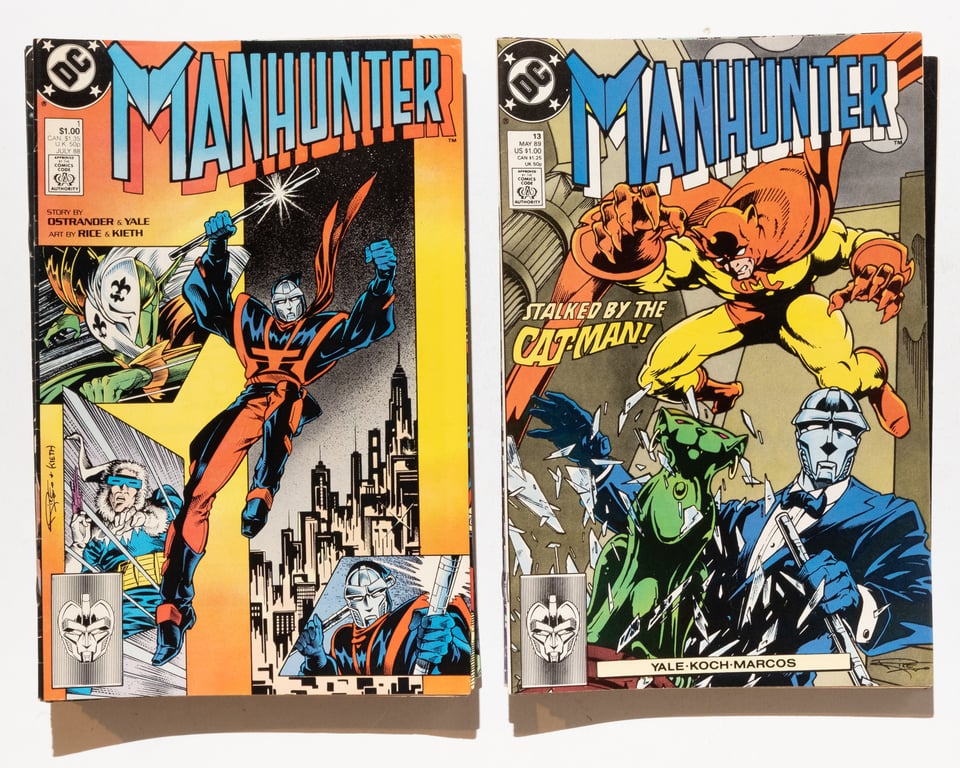
Manhunter is one of those series that is always lurking in a dollar bin and is for my money the paragon of a dollar book. It’s a late 80s DC title written by John Ostrander focusing on a mercenary bounty hunter that spun out of an event book and is closely aligned with that other dollar bin mainstay, Ostrander’s Suicide Squad. Plus there’s a rich history with the character’s name that will ensure plenty of confusion for the casual reader. I started picking this up after my journey through Millennium and Dynamo Joe made me want more Ostrander/Rice, but the reason I love this book is something else: the scripting by Kim Yale and the revelation of the artist Mary Mitchell.

Manhunter is really Yale’s book more than Ostrander or Rice’s. The first few issues ran an editorial by Ostrander explaining the genesis of the book in which he gives the pretty standard story of being too busy but luckily a capable writer was just in the other room etc etc. (Ostrander and Yale were married). Ostrander maintained a co-plotter credit on almost every issue of the series, and it is notable for how seamlessly plot points from Manhunter would weave into Suicide Squad storylines, but as the book progressed and with the publication of two important backups in issue 11 and 12, it became clear to everyone paying attention that this was the work of a new and talented writer.
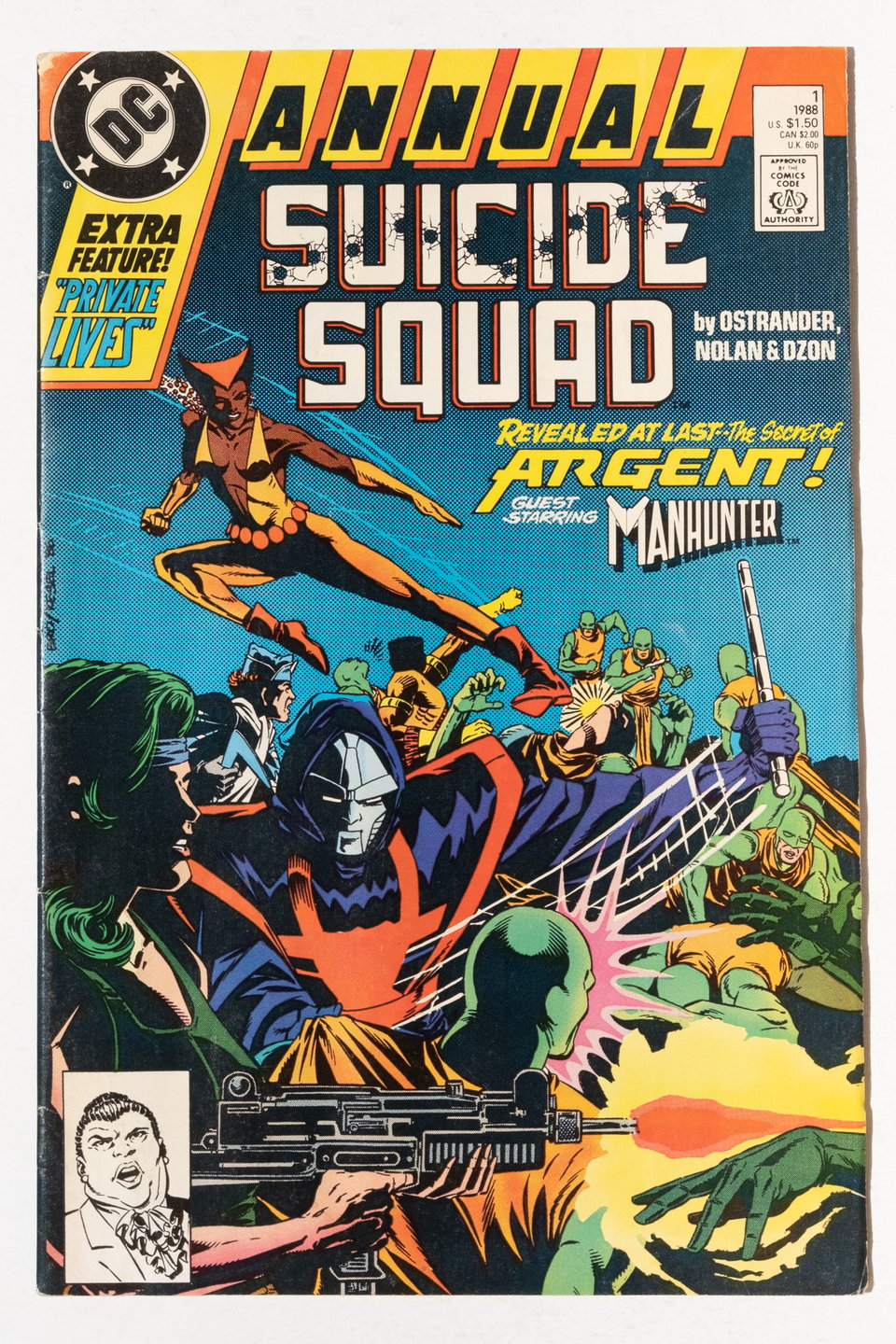
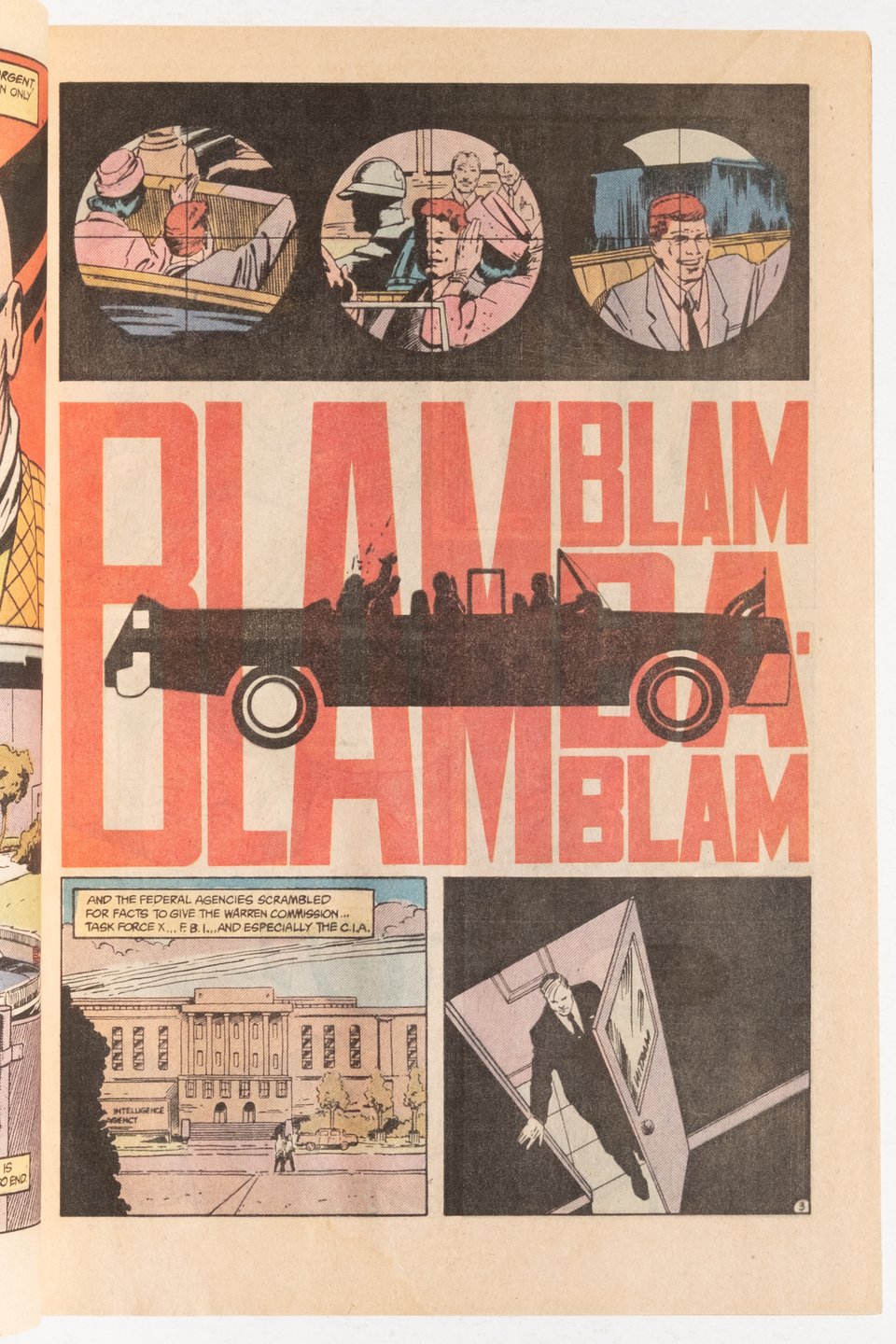
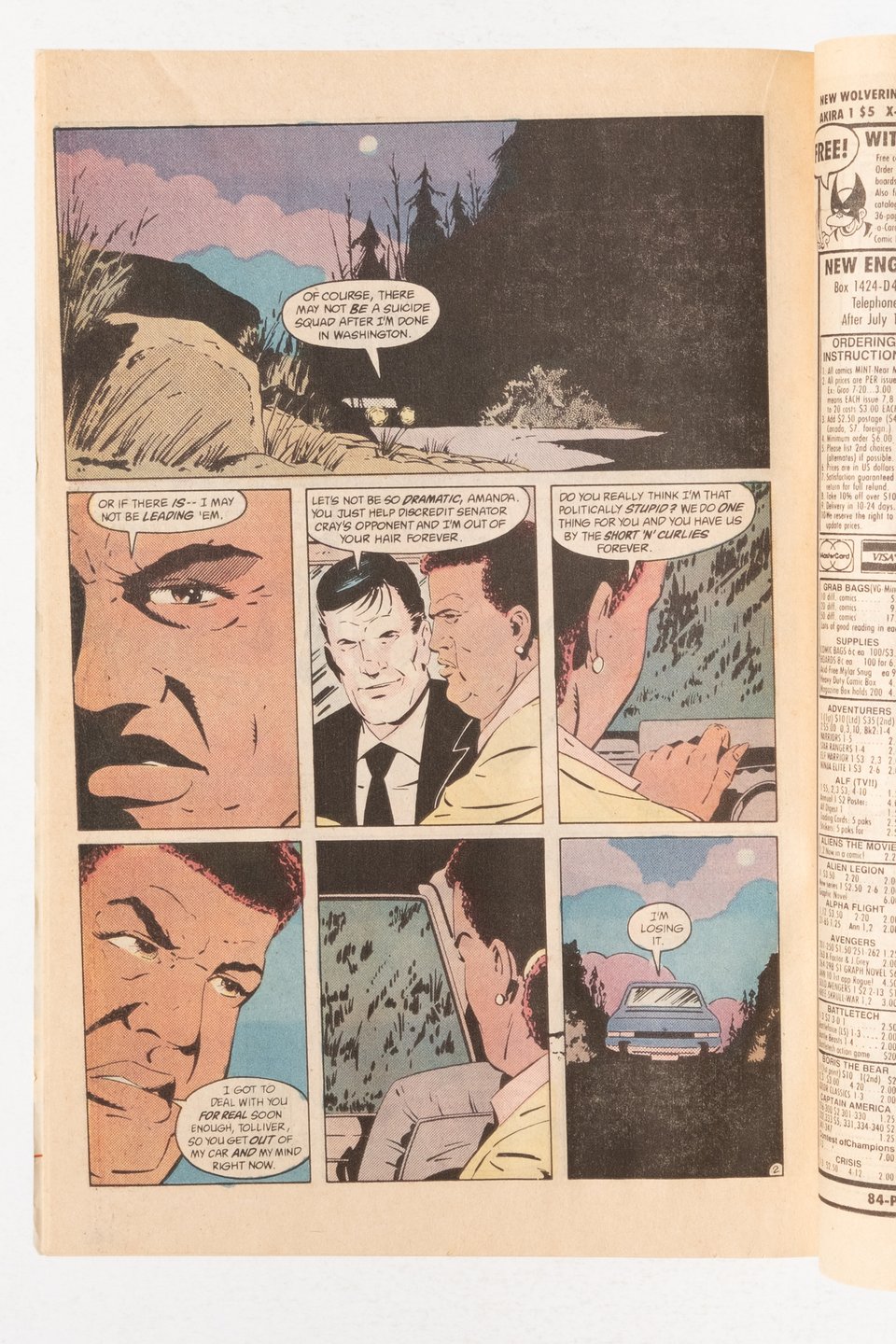
In brief, Manhunter is about Mark Shaw, the titular Manhunter as he works as a bounty hunter specializing in apprehending superhuman criminals. The rest of the cast is composed of his family and the people at the police station he gets his assignments from.
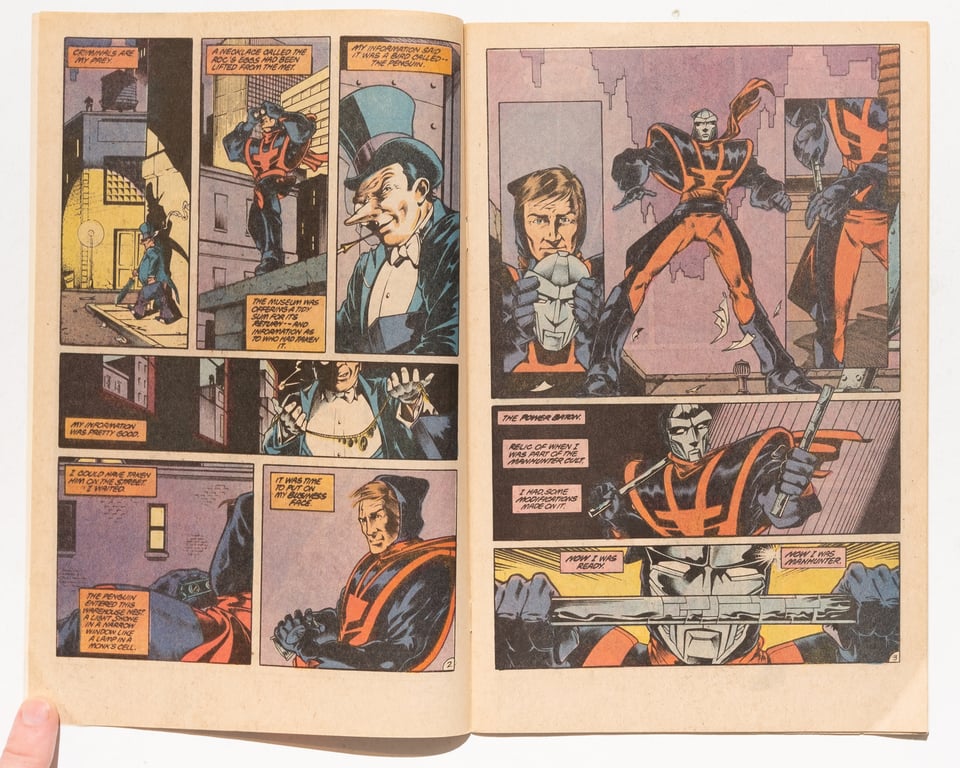
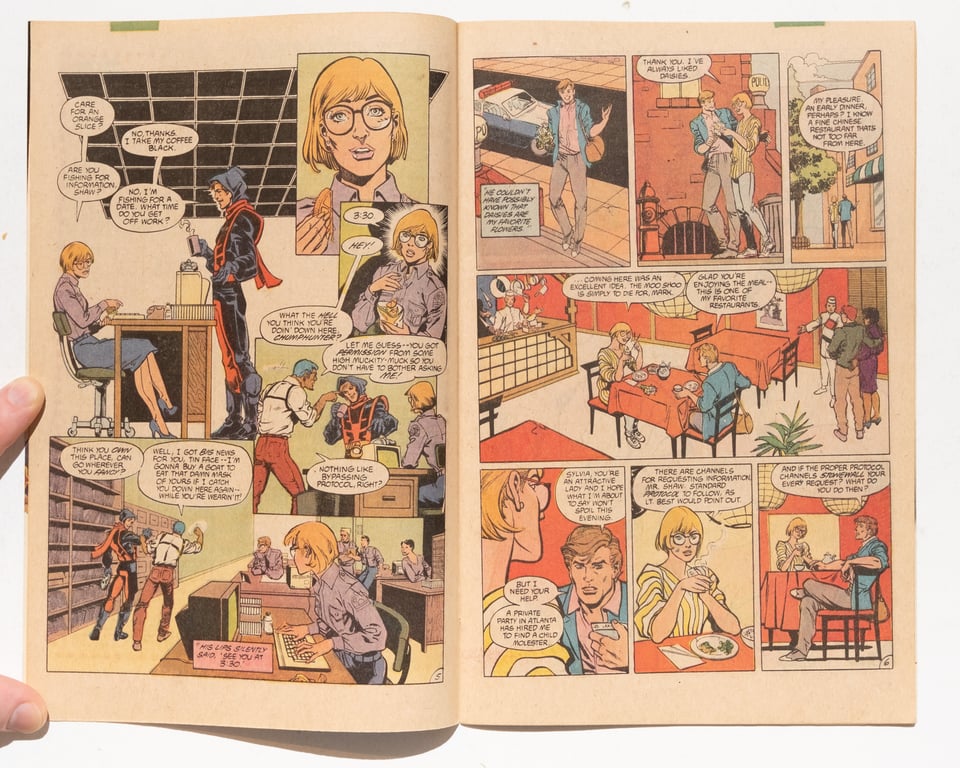
The first storyline revolves around a villain named Dumas obsessed with killing Shaw to acquire his mask. At the conclusion of the story arc we find out that Dumas was a shapeshifter that also lived a life as a wealthy retired actress in what was supposed to be a surprising third act reveal but that is actually just pretty expectable transphobic plotting for the time.

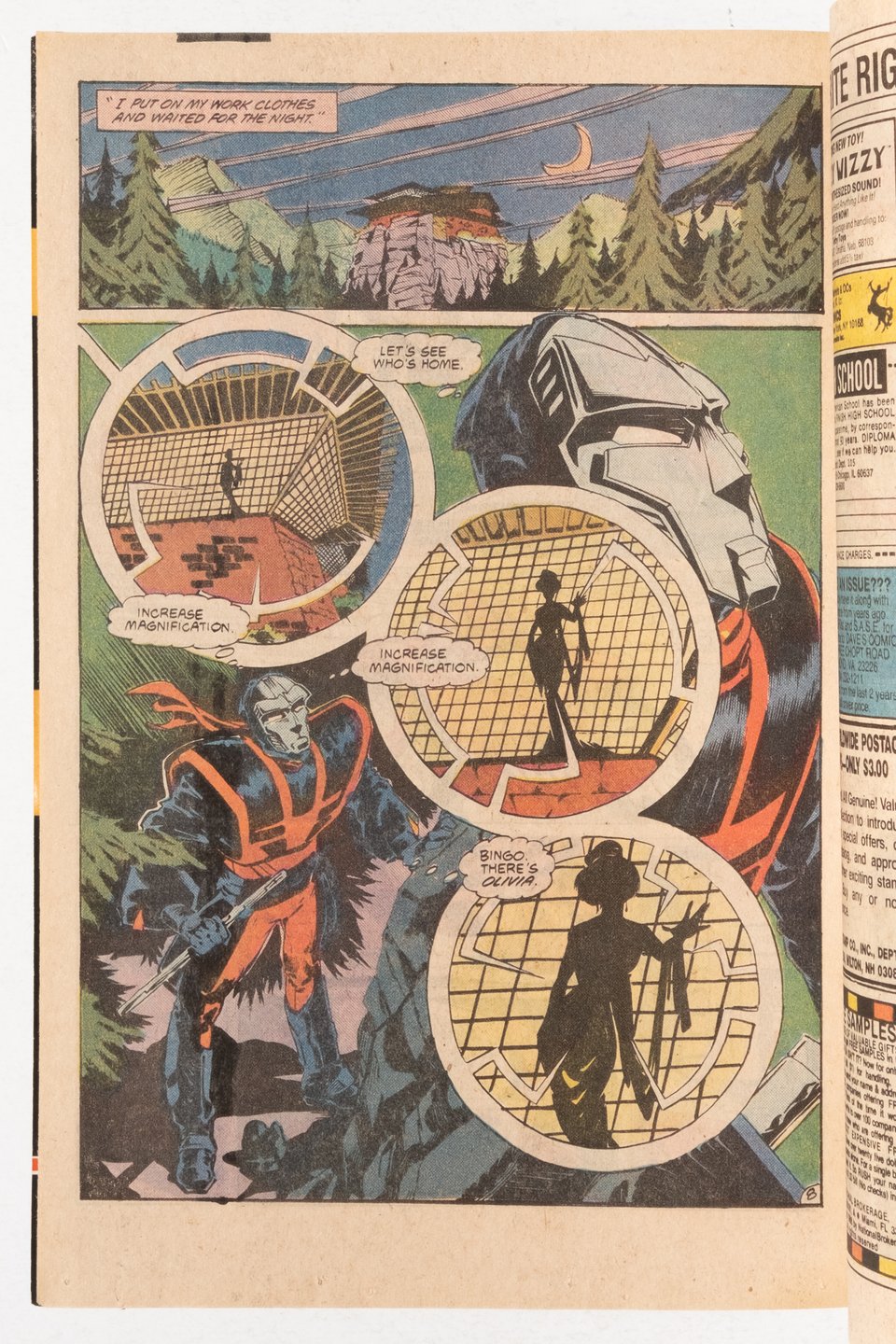
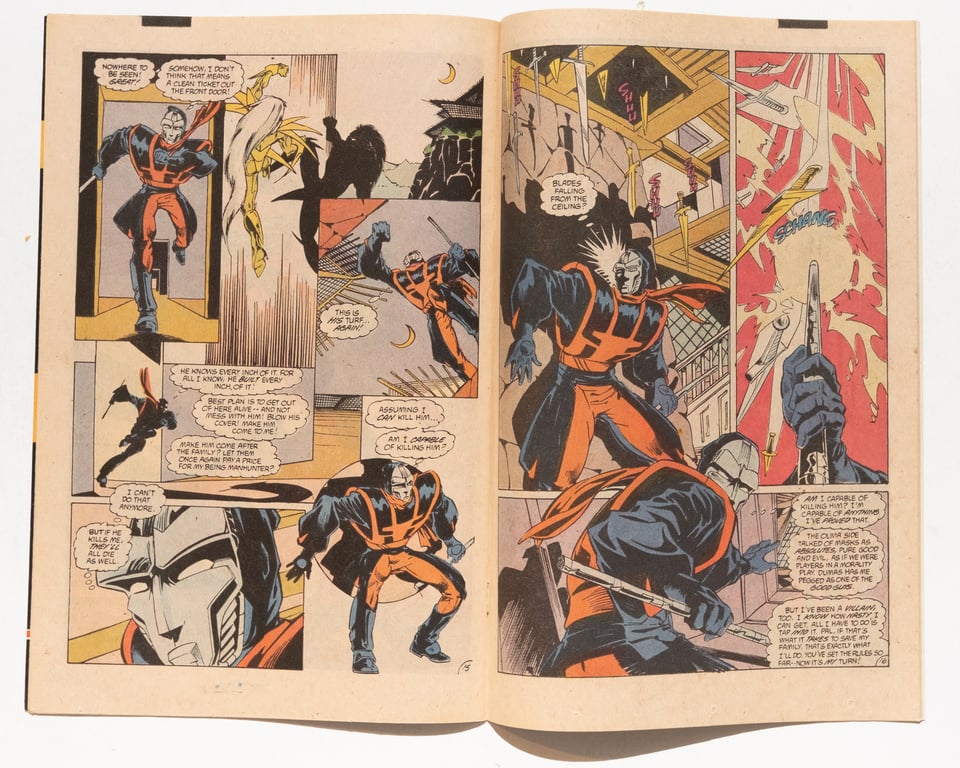
This first arc is also notable for being inked by Sam Kieth, which is really cool to see on top of Doug Rice pencils, but Kieth left the book after two issues to go work on some other reboot of an obscure Kirby character that DC owned the rights to. Kelley Jone’s stepped in to finish out the first arc and that combo is equally interesting to look at. Pablo Marcos would go on to ink almost every other issue of the series, giving a reliable finish to whoever was penciling the book at the time.
Shaw bounced around the back corners of the DCU for the next twelve months or so in a run of issues that defined themselves by being very deftly illustrated and very cleverly integrated into line wide events. There’s a lot of very gratifying formal structure on display, like in issue 6 or in the Flash crossover that just tells the same story from two different perspectives.
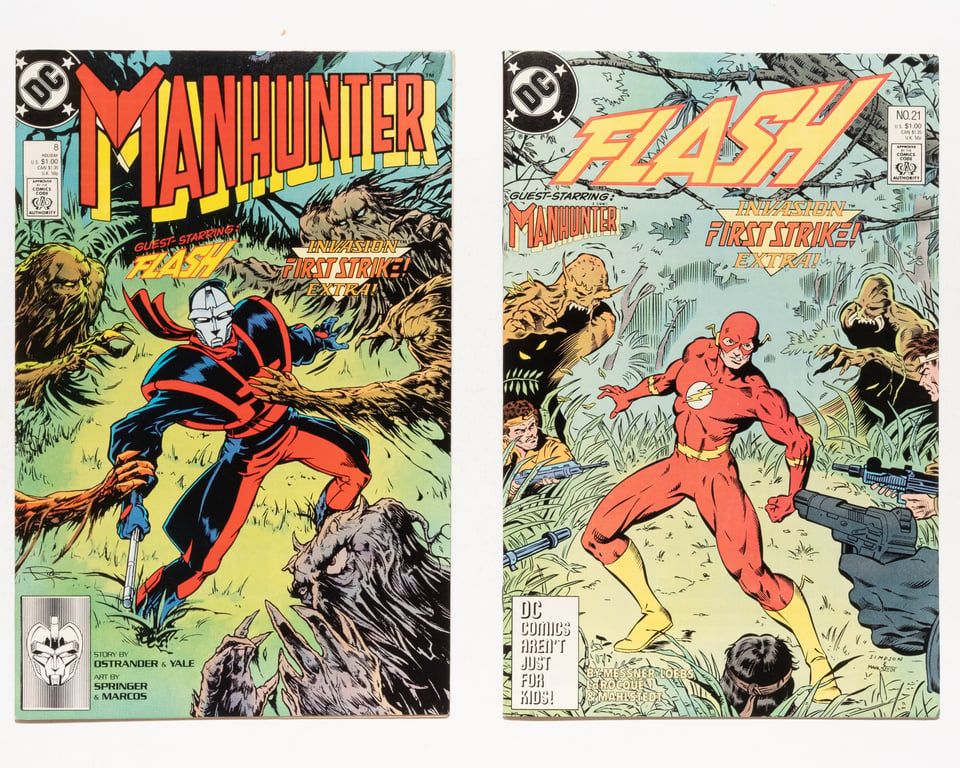
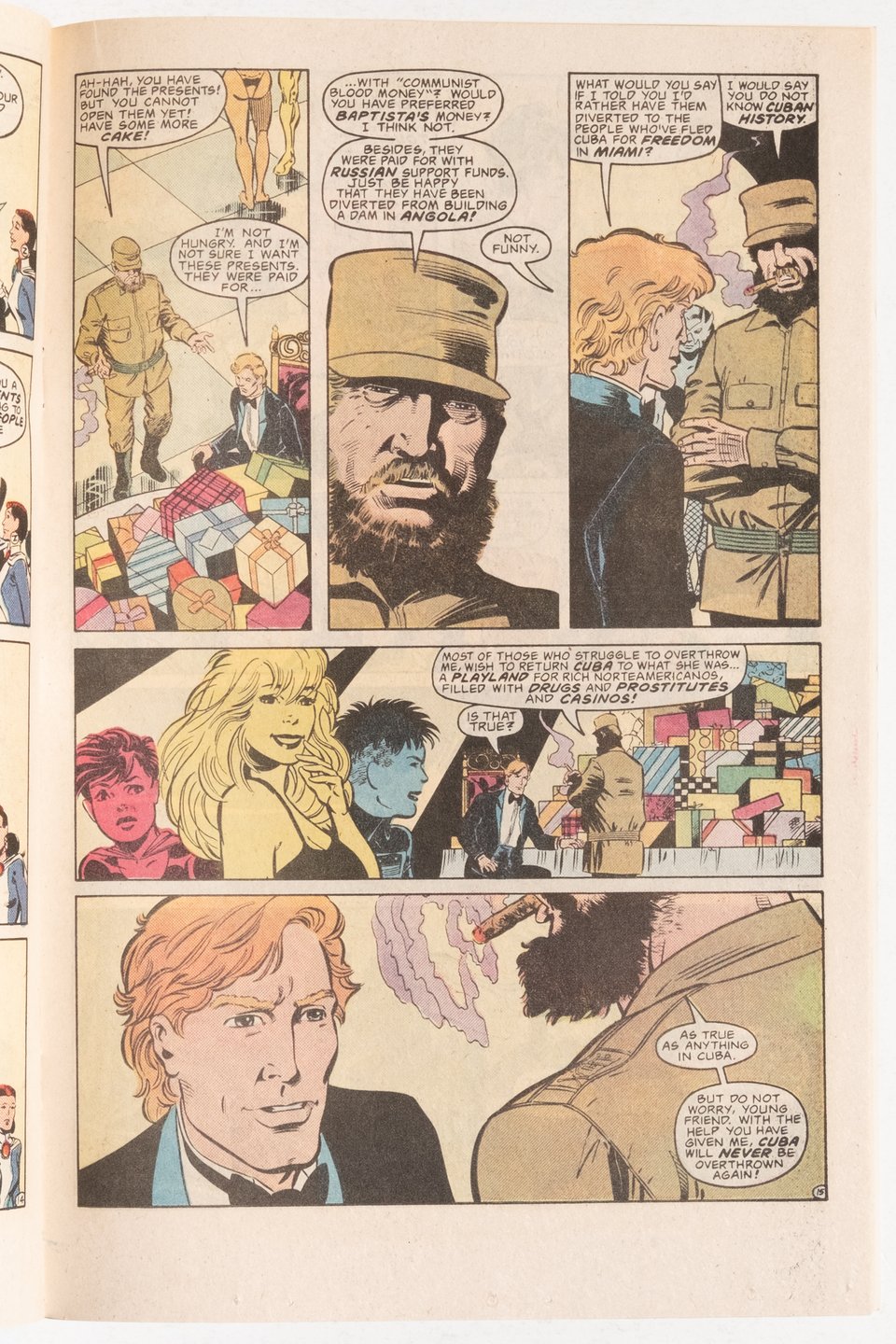
When I got to the conclusion of the ongoing storyline halfway through issue 12 I was a little surprised until I turned to the back up story written exclusively by Yale and drawn by Mary Mitchell— an artist who had filled in capably for Rice on issue 6 of Manhunter but whose style here just blows my top off.
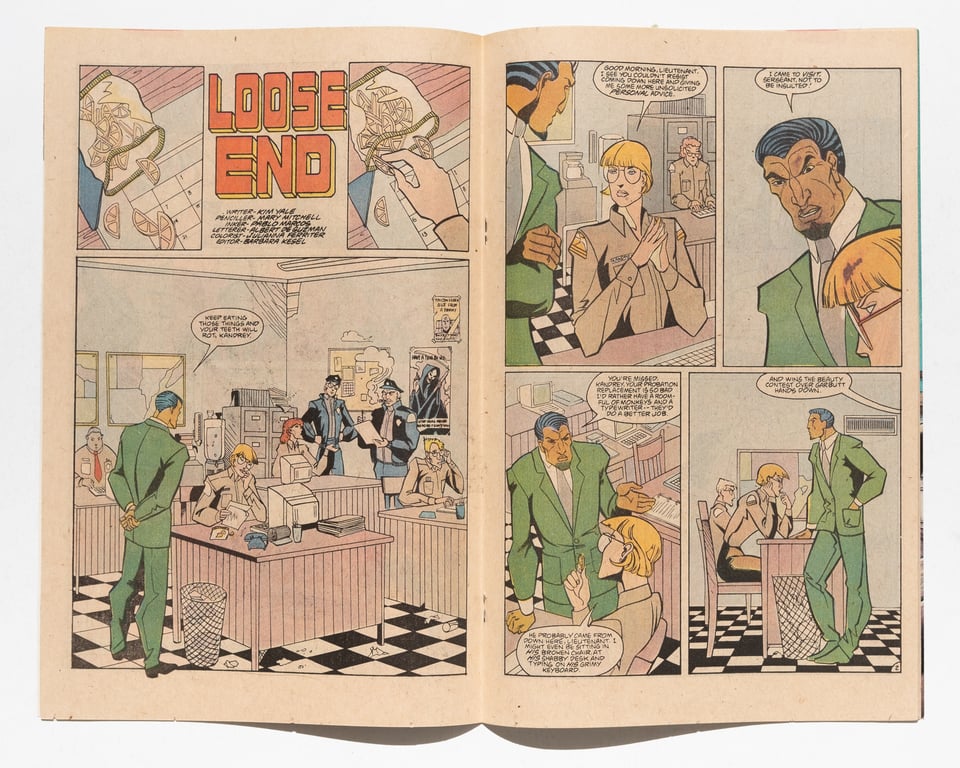
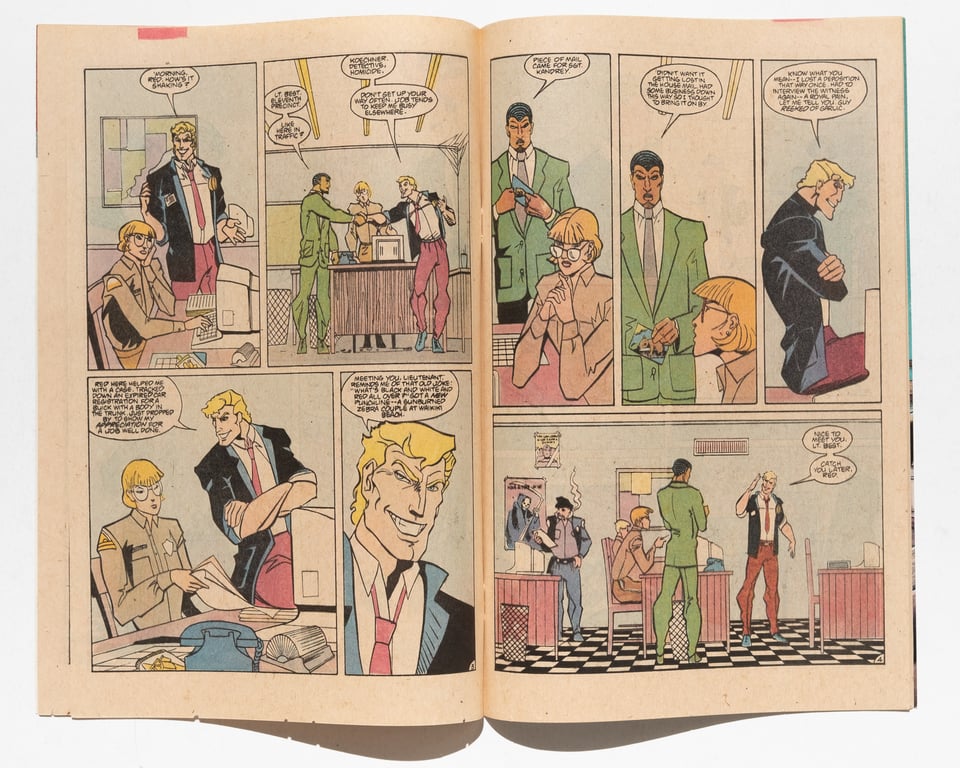
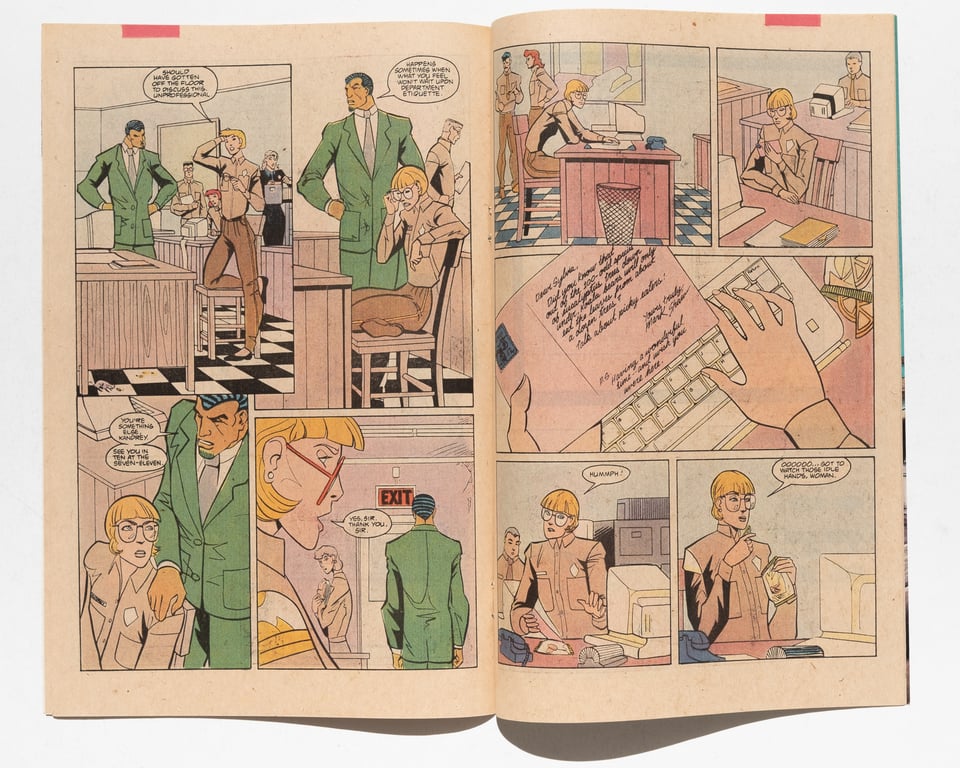
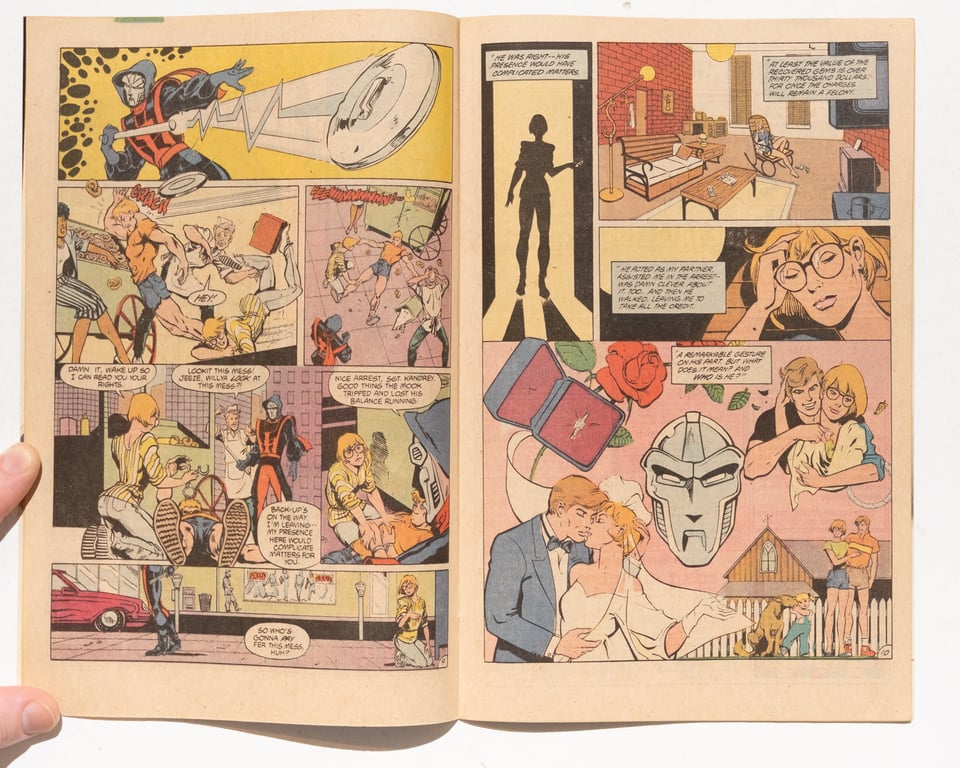
This seems to be one of Mitchell’s few jobs in comics, and her work that is out there is almost always made with Yale or Ostrander. It’s a great loss that we don’t have more sequential art from her because I love the way this stuff looks. It feels like one of the missing ingredients in Michel Fiffe’s style, and considering his knowledge of Ostrander and Suicide Squad I’m sure he’s encountered this artist too. Following this backup story, which also neatly tied up some dangling threads from previous issues, the next issue 13 also featured a backup story written by Yale and illustrated by Sam Kieth! This would be at or near the peak of Kieth’s pre-Maxx style and displays most of those hallmarks you would expect from him— circular panels, exaggerated anatomy, psychedelic imagery, hairy arms. This story has a very different tenor from the previous backup, and gives a nice dimension to the entire book.
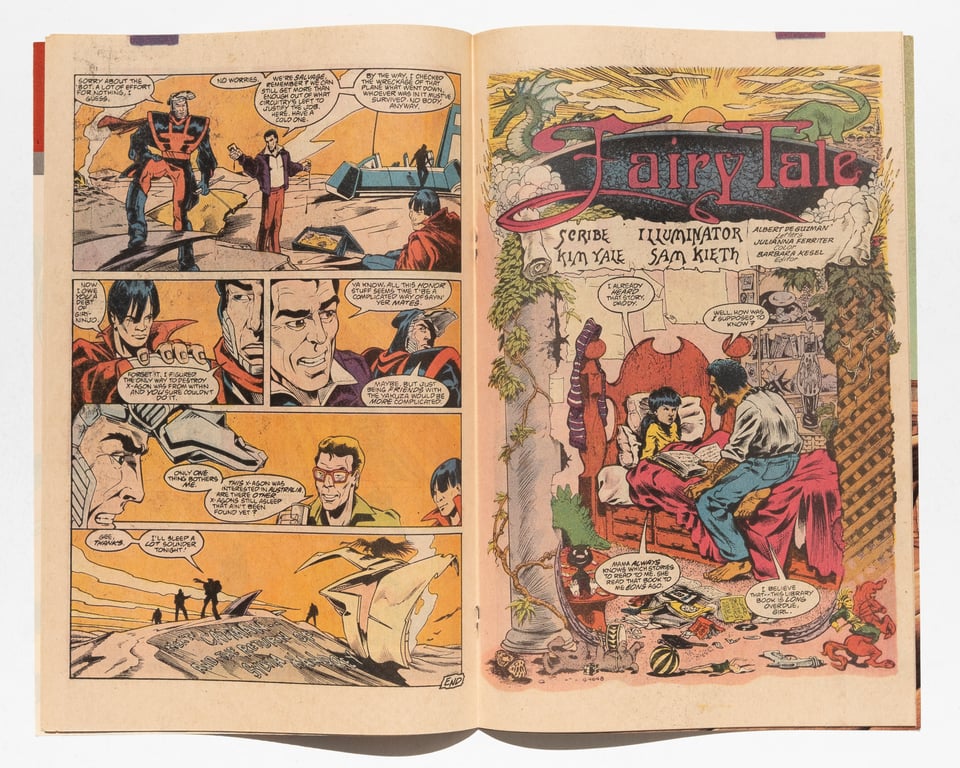

Issue 14 was both a tie in to yet another event— this time the Janus Directive that wove through the more espionage tinted books of DC at the time (and which I did not include the other issues of— check it out from the library that’s what I did!)—and the final issue to be illustrated by Rice. This is little surprise as it is the same thing that happened with his own book Dynamo Joe a few years prior, but it still stings when DC replaced him with Grant Miehm in issue 16 (15 had a fill in artist) to finish out the series.

Miehm is a solid artist and I have no real complaints with his work here, but it also lacks that extra flair for design that Rice brought to the book. The book was already on it’s way out however, and concluded with issue 24 after Yale oversaw a multi-issue arc that revived Dumas for a complicated revenge plot. Yale would continue writing comics with and without her husband for the next decade or so before succumbing to cancer in 1998. Manhunter was her first professional scripting credit and stands well beside many of the best books of the 80s that I count among my favorites.
As you can expect, there is some minor damage to some issues, though given the volume of what is offered here it could be much much worse. Aside from some corner creasing on issues, the worst offenders are issues 16 and 20.
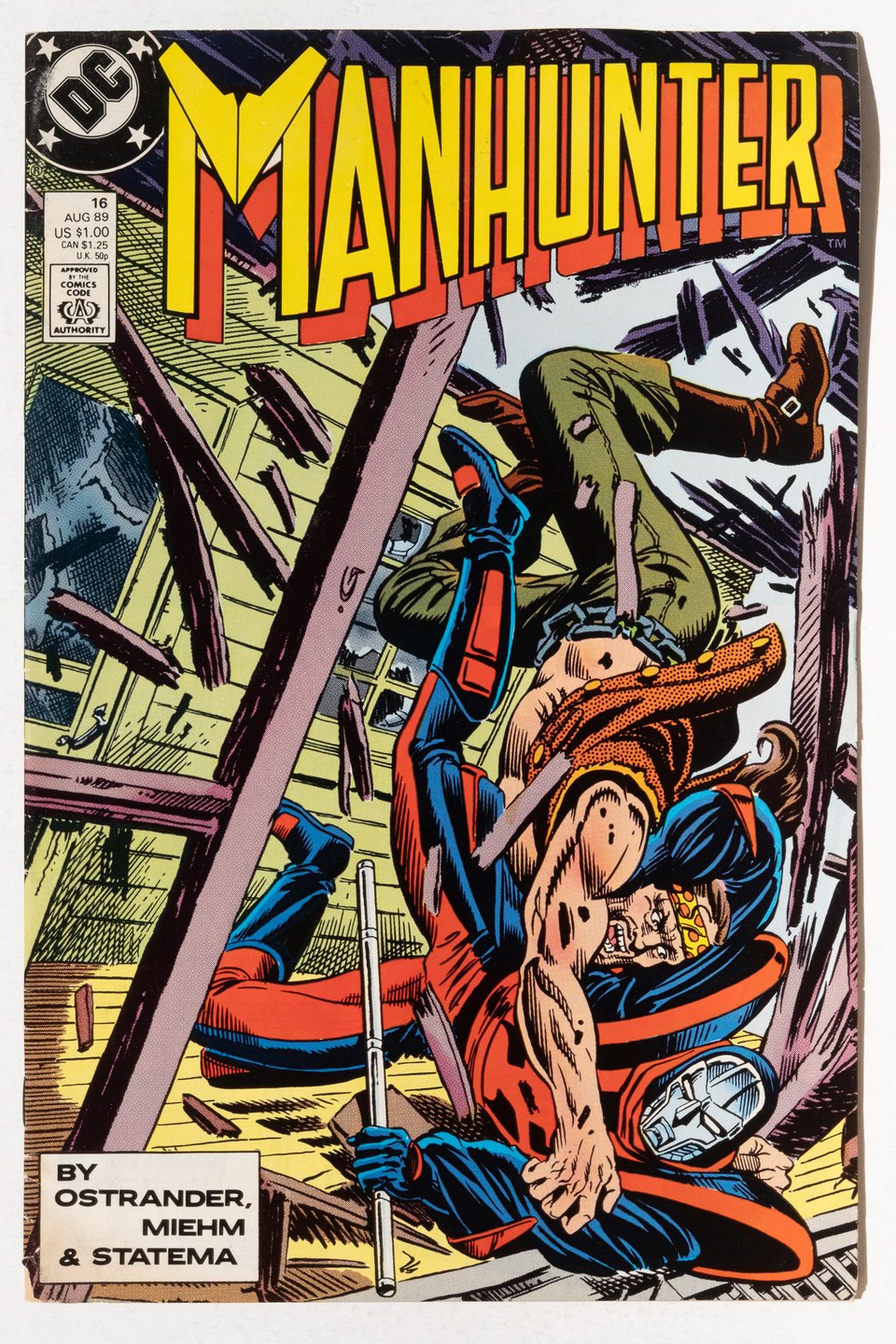
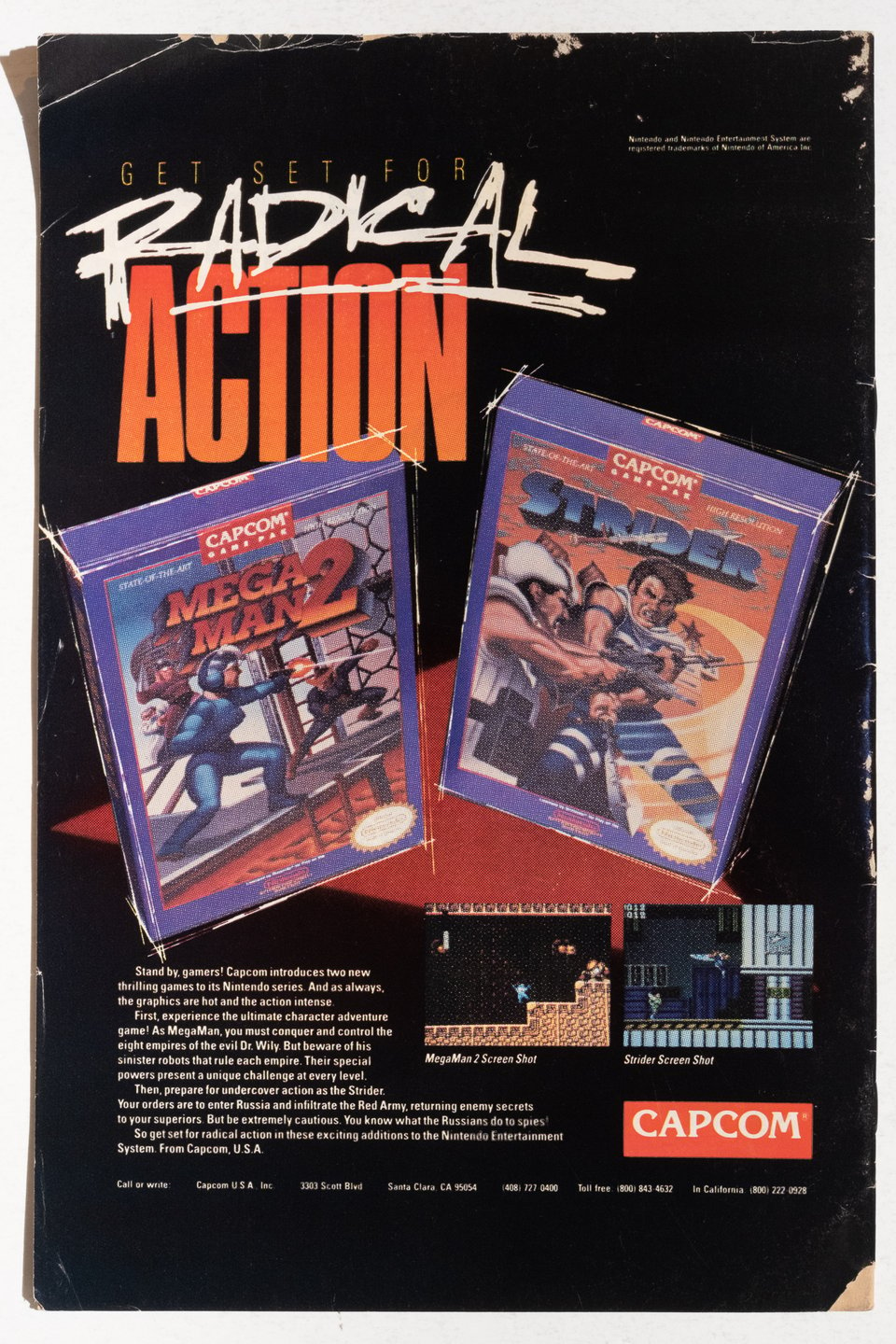
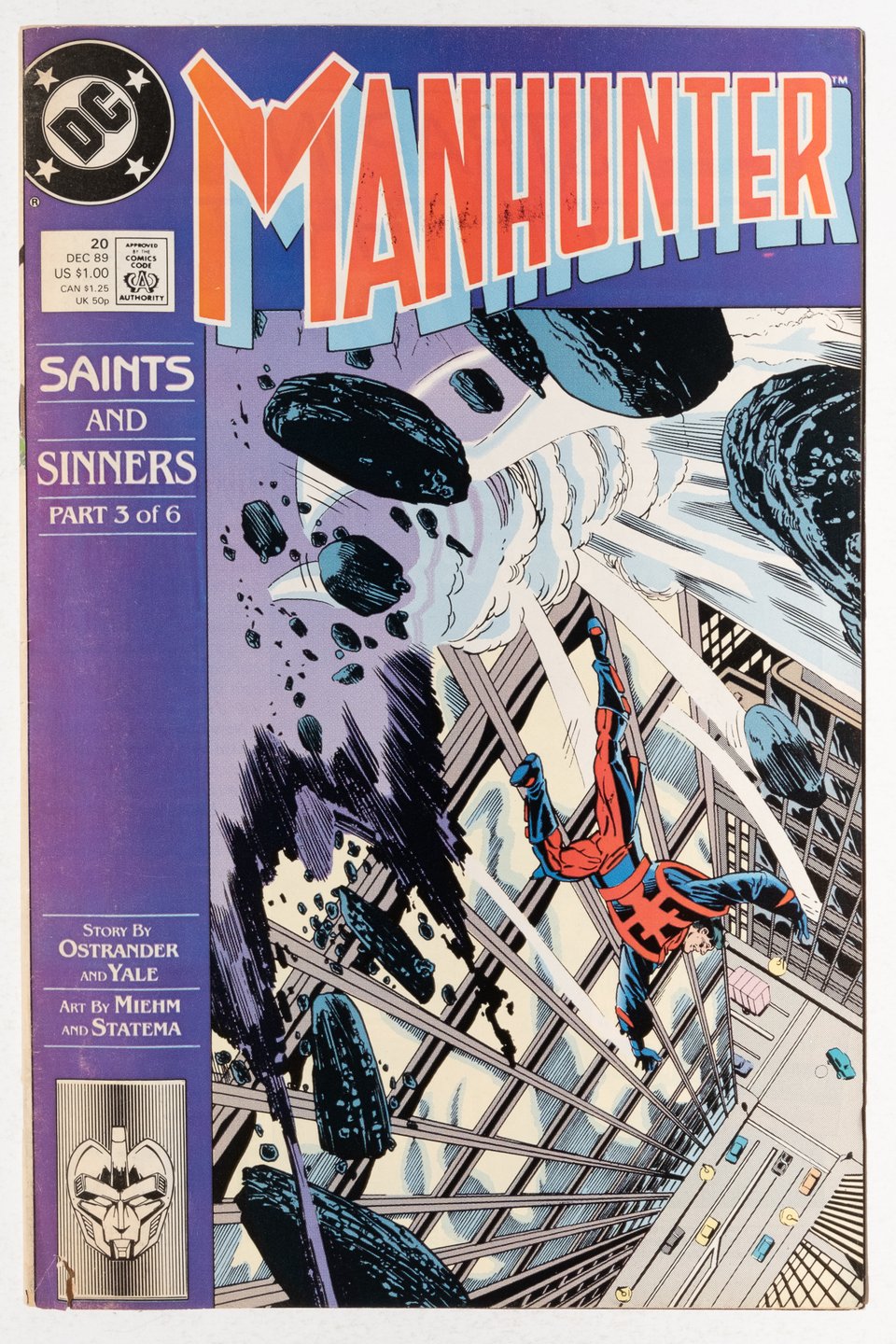
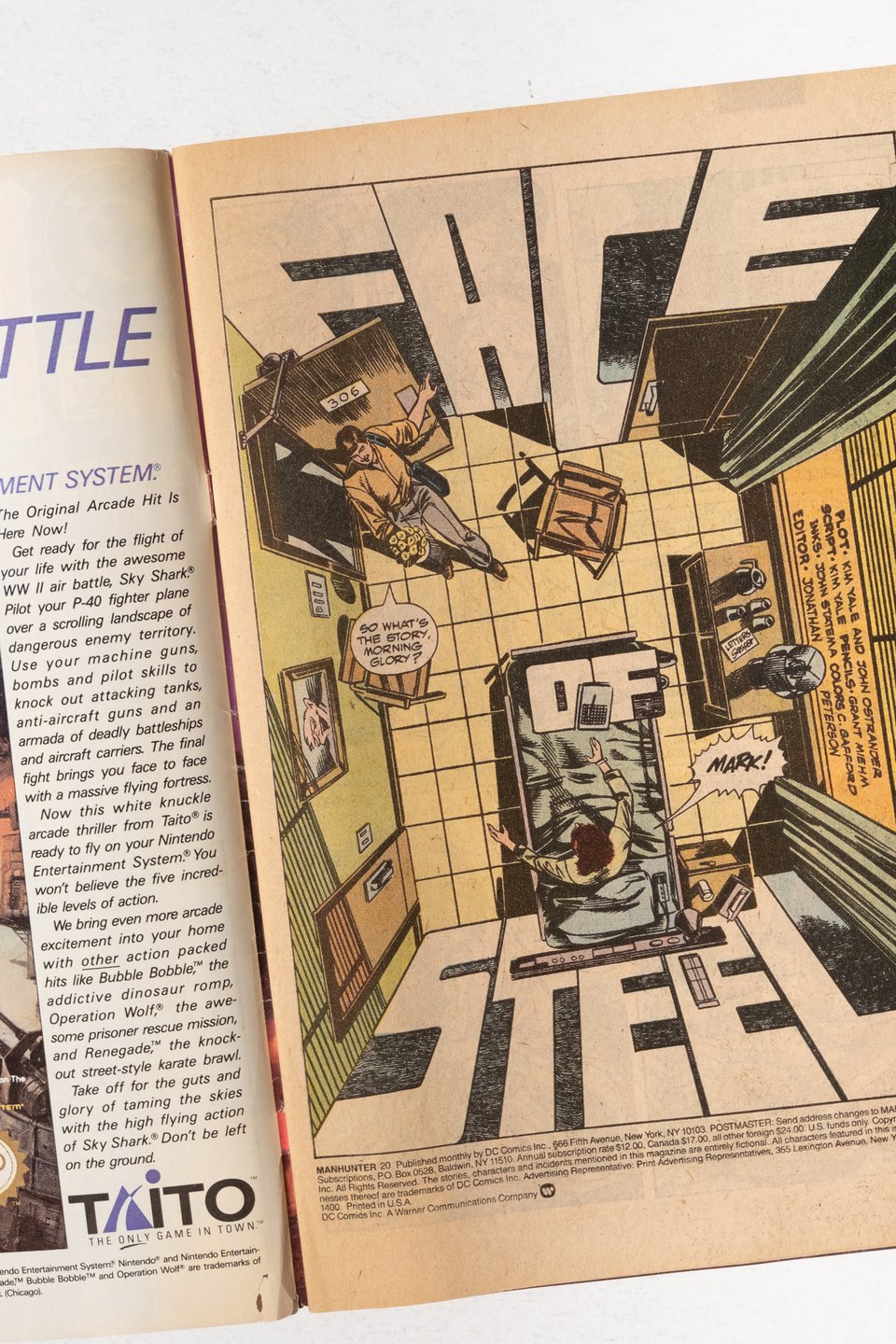
The Complete Neat Stuff by Peter Bagge

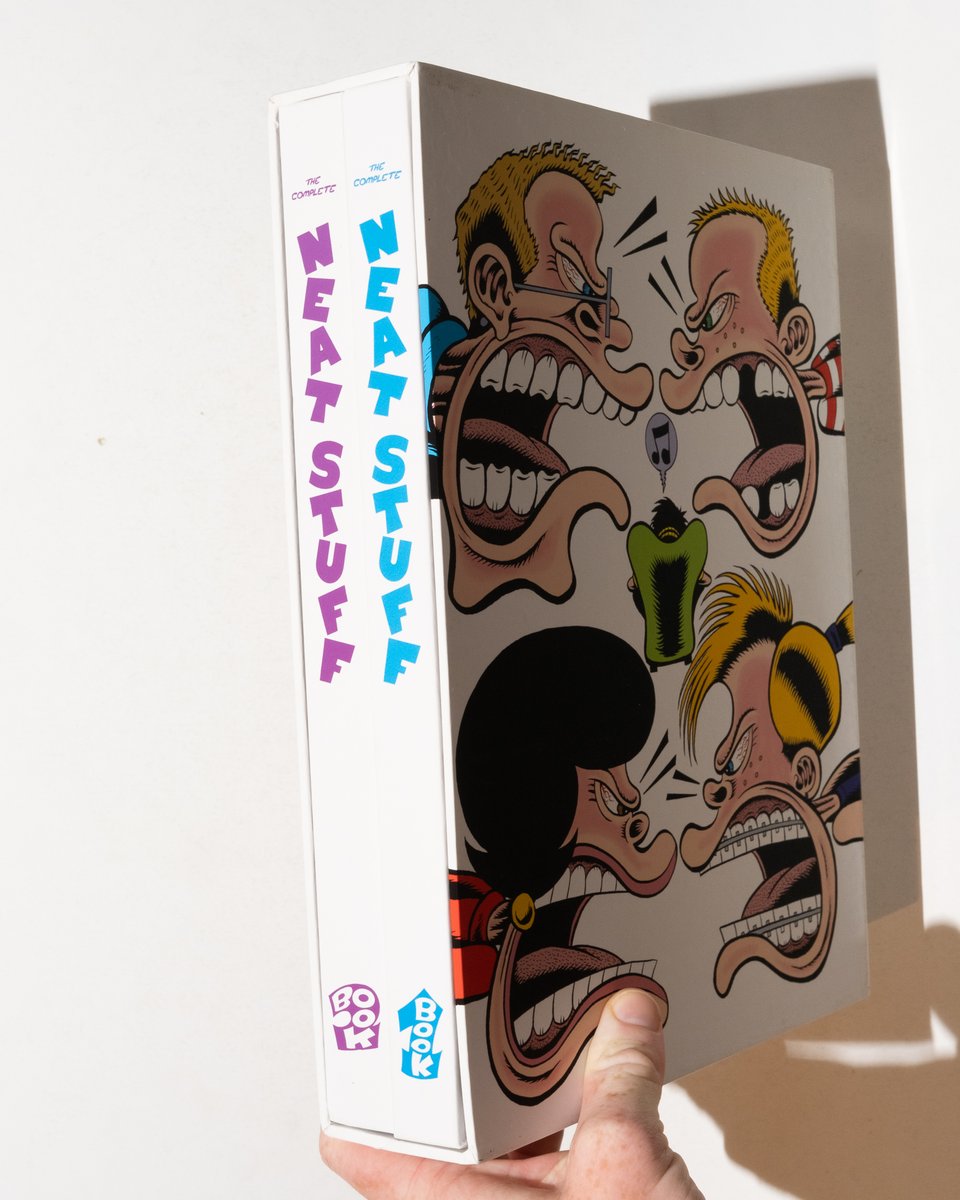
I don’t know if I would say Bagge has been a blind spot in my comics reading, but he was never part of my core pantheon of comics creators the way Daniel Clowes or Charles Burns have been. I’ve dabbled with reading Hate and a few other Bagge projects here and there, but reading this massive, and well designed, collection of all 15 issues of Bagge’s first solo series was my first time really digging into his work. My primary takeaway from jumping in and reading all that? This guy was GOOD right from the start and this collection is one of the best ways to revel in his talent.

In retrospect, I think it makes sense that I initially gravitated towards Clowes and Burns over Bagge, even though he is a contemporary of both of them. Whereas Clowes and Burns hew towards realism and classical illustration, Bagge is firmly cemented in a lineage of cartoonists like Big Daddy Roth and Basil Wolverton who understood the power of exaggeration. Not that this statement is blowing any minds, I think this kind of understanding about Bagge’s work is well known, but what can get lost is how good Bagge is at deploying that style to tell dramatic stories and communicate human emotion. A cartoonist’s approach if I ever heard of one.

This journey from a preference for realism towards abstraction is one most people go through I would argue, and it’s relevance to comics should be no stranger to anyone that has read Scott McCloud before (insert obligatory plug for my essay/t-shirt on McCloud— available in shop now!)
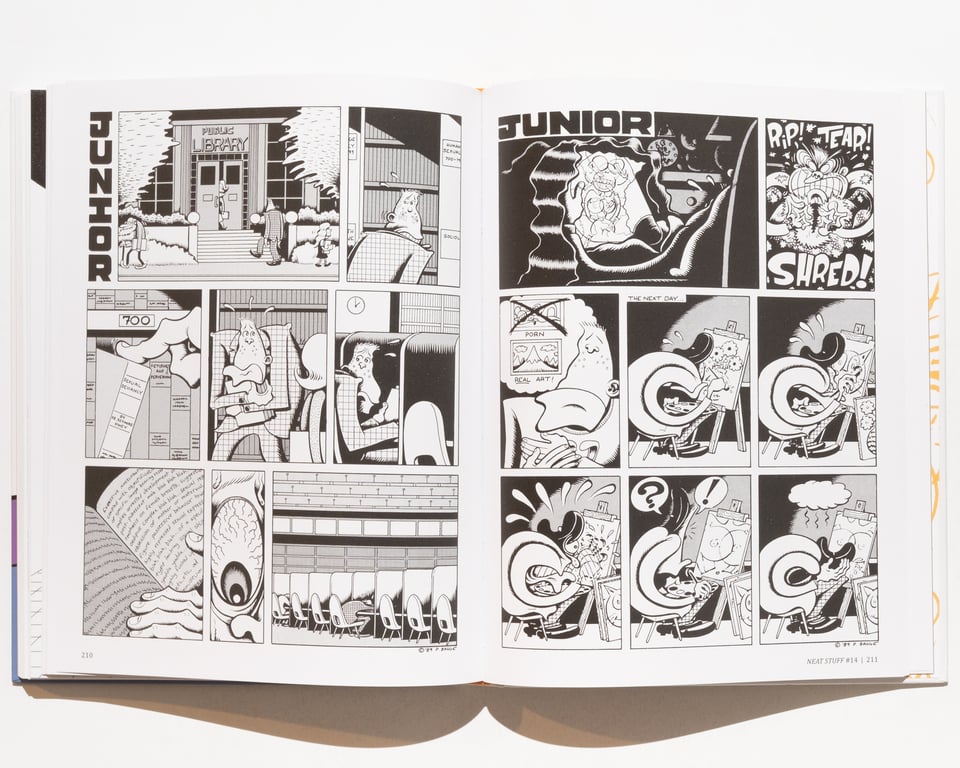
This collection came out in 2016 at a time when the industry was awash in these kind of deluxe collections of material. Fantagraphics was no different, putting out similar collections of Bagge’s Hate, Julie Doucet’s Dirty Plotte and Daniel Clowes’ Eightball among others. Normally I am not a fan of this model because it inevitably sacrifices readability for completeness and scale. However, I must give credit to the designers here. By splitting the issues into two volumes housed in a slipcase, they made each individual volume just light enough to still be a comfortable reading experience without skimping on page size or print quality.
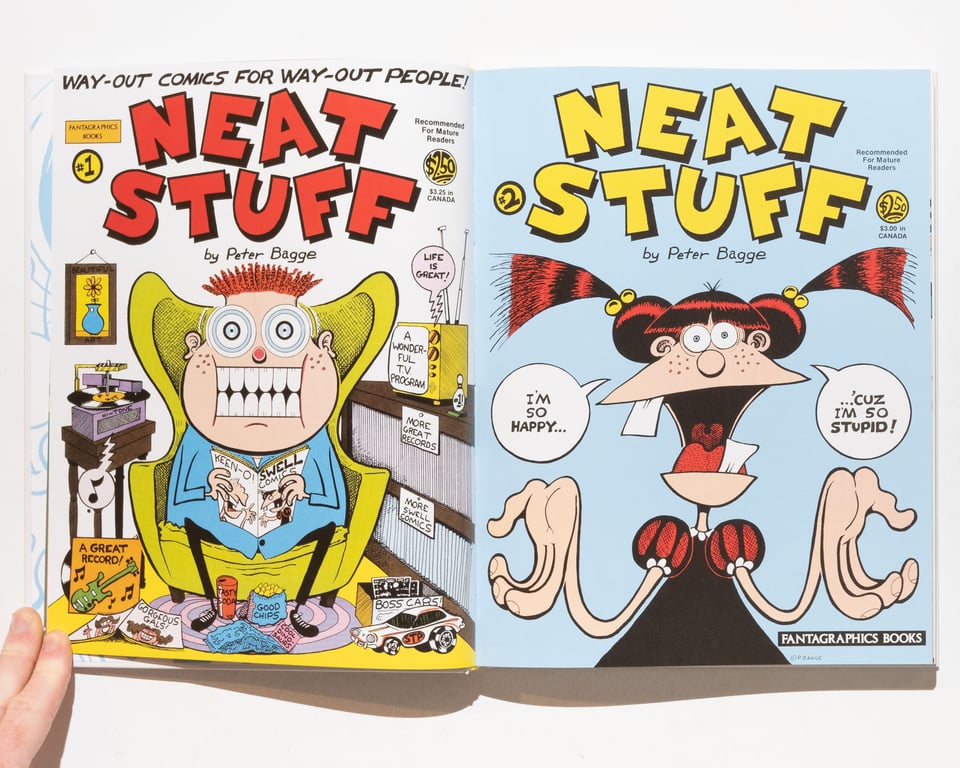
It is near the end of the collection when you start to feel Bagge pushing against the limitations he had set for himself with the series. When it began, Bagge told stories about a variety of characters and one off gags, but as he matured his focus shifted more and more towards the Bradley Family culminating in the single issue length story that closed out the series all about Buddy Bradley’s travails in suburban New Jersey.
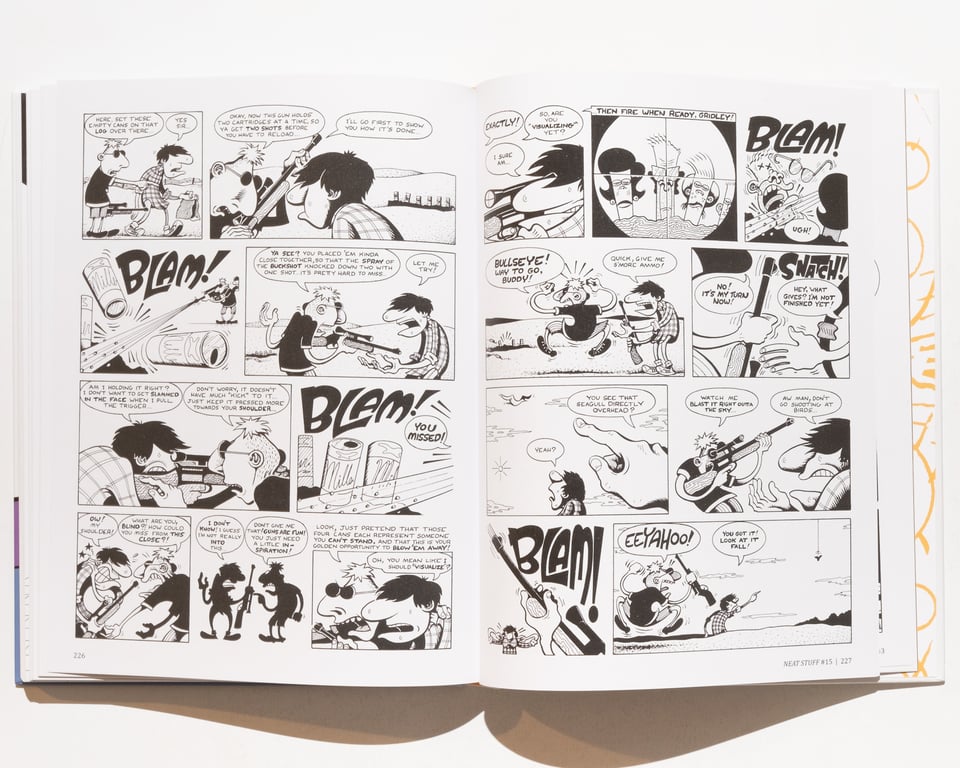
Buddy is frequently cited as a stand-in for Bagge himself, and I am sure that is true. But it is clear to me that Bagge holds an equal amount of affection for Studs Kirby, the right wing talk show host that he created and devoted a significant amount of time to in these pages. The Studs Kirby stories frequently steal the show in this collection. Given Bagge’s own predilections it seems at least possible that Bagge sees something of himself in Studs as well.
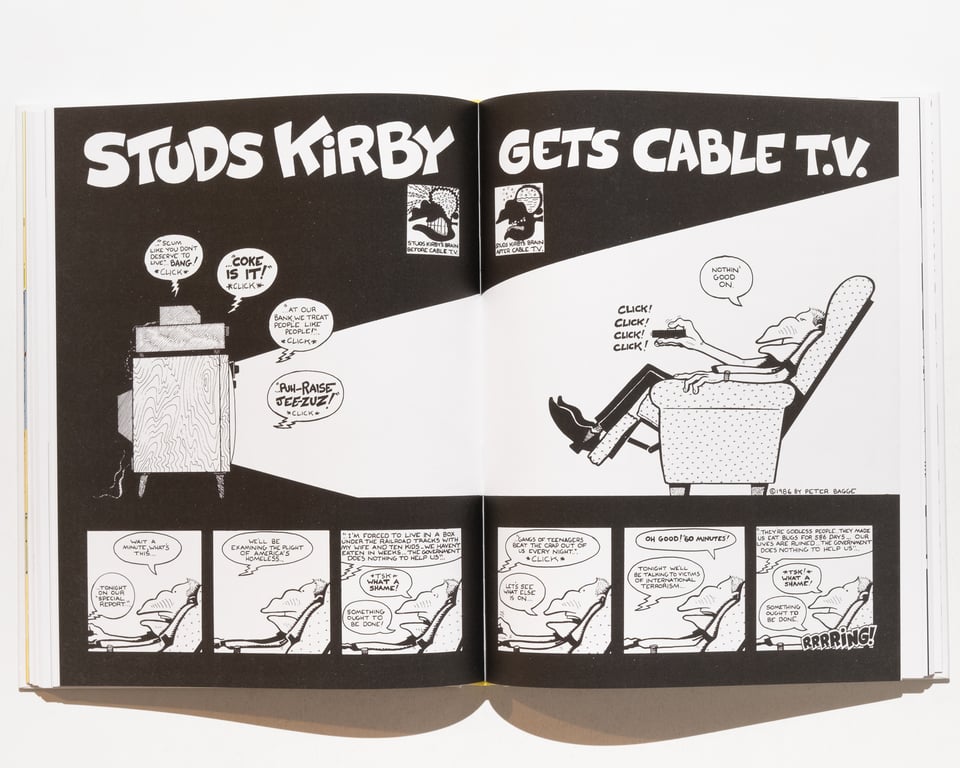
Taken together, Manhunter and Neat Stuff make for an odd pair. Yet both books are quintessentially eighties, representing two poles of what was a rapidly changing marketplace. Manhunter existed in an ecosystem at DC fully reinvigorated by the work of Alan Moore and and his fellow members of the British invasion. Reading the DC books of the time it felt almost possible to build a career out of making actually good comics for a corporate overlord. In contrast, Neat Stuff, Bagge, and Fantagraphics defined the perimeters of the American alternative scene for decades afterwards, and in the case of Bagge, that extended outside of comics into the wider alternative culture of Seattle in the 90s. With the benefit of hindsight, it seems obvious that Bagge would be the recipient of deluxe hardcover reprints of his work while Manhunter would languish in semi-obscurity in our nation’s dollar bins. I am clearly a fan of both books, and if my point were simply that both are worthy of your attention that would be enough. But I also think they have more in common than first glance. Both books are examples of new writers finding their voice over the course of a book, both come from a solidly middle class point of view, and both books come from a time when the distance between “art” and “commercial” comics was minimal. A time when it was possible to come across the most Clowes-ian of pages in the middle of a DC comic.
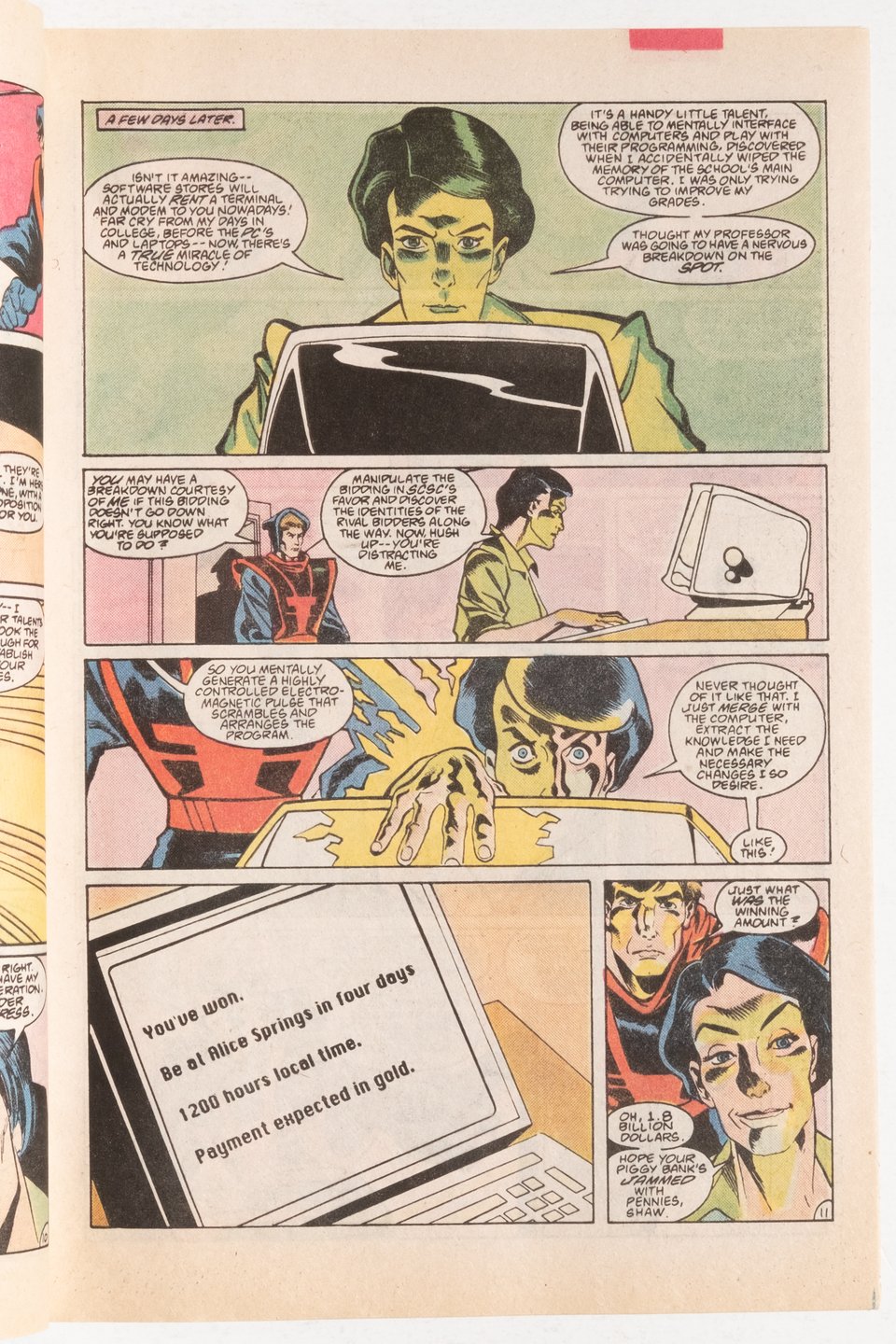
Thank you for reading Ry’s Comic List. To purchase the books mentioned, please click the link below to check out my online shop that features this and many other titles. I’ll be back in about a month for the Halloween issue.